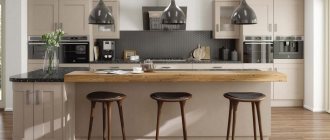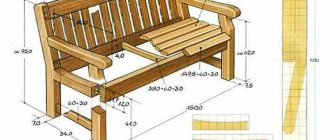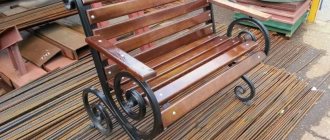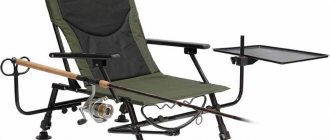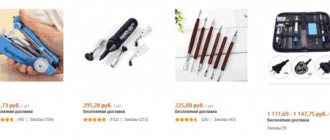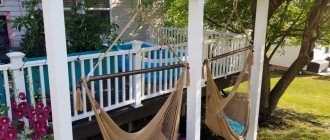Due to its unique properties, a metal pipe with a rectangular cross-section is a multifunctional building material. A wide variety of structures are constructed from it. We will consider the most common of them in this article.
Various metal structures from profile pipes
General information about the profile pipe
The profile pipe can be made with a rectangular, oval, or square cross-section. As a rule, the material for its production is carbon or low-alloy steel. Stainless steel is less commonly used for these purposes.
Since profile pipes have stiffening ribs, they, like the products made from them, are characterized by increased strength. The resistance of such a metal frame to mechanical loads is much higher than that of a frame made from standard round pipes.
Profile pipes are convenient to store and transport. Pipes with a parallelepiped cross-section take up less space when stored and are more secure than pipes in the form of a cylinder.
Necessary tools for working with corrugated pipe
To cut the workpieces, you should use a circular saw - an angle grinder; a hand saw is also suitable. The parts are connected using a welding machine, but those who do not have one or are not skilled enough in handling one can take an electric drill and a set of drills for metal and wood. Also, to work with a profile pipe, you need to prepare a hammer, tape measure, chisel, screwdriver - or an electric screwdriver and a set of attachments, emery cloth.
Those who plan to create a structure with rounded elements are recommended to use a tool such as a profile pipe bender.
Options for the use and application of profile pipes
Now we will look at a number of examples of the use of profile pipes for various structures.
Manufacturing furniture from profile pipes
In the design and production of furniture, the key property of profile pipes is versatility. This material is great for shelves, benches, coffee tables, hangers, open kitchens and desks.
To make furniture from metal elements, you need to follow the following step-by-step instructions: 1) study the drawing of a piece of furniture, cut the profile pipe into parts for blanks; 2) cleaning the cut burrs and drilling the necessary holes; 3) bending of frame structural elements using a tool; 4) welding work to connect structural parts; 5) tie the structure using bolts; 6) preparation and installation of fittings on furniture; 7) installation of wooden and plastic structural elements; painting furniture parts.
2) cleaning the cut burrs and drilling the necessary holes; 3) bending of frame structural elements using a tool; 4) welding work to connect structural parts; 5) tie the structure using bolts; 6) preparation and installation of fittings on furniture; 7) installation of wooden and plastic structural elements; painting furniture parts.
Greenhouse frame made of profile pipe
Self-construction of a greenhouse frame from profile pipes requires a certain amount of time, money and effort, but such a structure will last for many years and, as a result, will constantly bring benefits. When planning the construction of a greenhouse, the question of choosing frame material often arises. In this case, a profile pipe is one of the best solutions. The manufacture of a greenhouse, the frame of which is made of corrugated pipe, is described here.
Steel profile pipes for greenhouses are advantageous because different types of coverings, in particular polycarbonate, can be easily attached to them.
Gazebo made of profile pipe
To build a gazebo, a steel pipe with a square or rectangular cross-section is often used. The combination of the strength of the material and the rigidity of the pipes due to their shape ensures uniform distribution of the load on the gazebo, while at the same time the design is lightweight. With this profile, the required dimensions of the gazebo can be easily adjusted, which also has a neat and stylish design.
Video description
An example of making a table of an unusual design is shown in the video:
When the frame is ready, it is processed with a sanding disc, smoothing out the welds and removing the rust. Then it is primed, coated with paint and allowed to dry.
When making furniture from profile pipes and wood, parts from different materials are fastened with ordinary self-tapping screws. To attach the tabletop, it is laid on the floor or other flat surface, and an inverted frame is installed on it. Mark the mounting holes and drill them into the metal, selecting a drill to match the diameter of the screws. They are screwed in from the side of the frame so that the hardware goes through it and goes deeper into the boards of the table top, but does not go right through them. Why fasteners are selected in advance according to length.
The last stage is sanding and treating the table top made of planed boards with paints and varnishes.
Do-it-yourself products from profile pipes
Builder 4th category
Products made from profile pipes are structures that have increased strength and wear-resistant characteristics. With their help, you can make a large number of the most varied and useful things in the household, such as canopies, fences, stairs, greenhouses, gazebos and even pieces of furniture. All of them will help create the most comfortable conditions for living or working.
Profile pipes have high strength, which allows them to be made into various designs
Why is professional pipe attractive for making furniture?
Profile pipes with a rectangular or square cross-section are available in different sizes and with different wall thicknesses. These parameters determine the scope of their purpose. Thick-walled products with a large cross-section are used to construct building frames, fence posts, retaining columns, and decking. And products with more modest parameters are used for the manufacture of facing frames, canopies, canopies, gazebos and greenhouses. Many household products from profile pipes are also made from it, including home and garden furniture. The thin-walled profile of a small section bends easily, which allows you to create from it not only cubic, but also original openwork structures.
Garden bench on a bent frame Source prom.st
This material has many advantages.
- High strength and ability to withstand heavy loads with low weight and size due to four stiffening ribs.
- Dimensional stability under changes in temperature and humidity, resistance to weathering and chemically aggressive substances, which allows you to make outdoor furniture from profile pipes, tables and workbenches for installation in garages and workshops.
- Simplicity and versatility of installation of structures: corrugated pipe is easily cut with an angle grinder; assembly can be carried out either with bolts or by welding.
- Affordable price of material.
- Undemanding to storage conditions.
A standard set of tools available in the arsenal of a home craftsman is quite enough to make a table or other piece of furniture on a metal frame. In the absence of a welding machine, the parts can be connected with bolts, having previously made mounting holes.
Difficulties arise only in the manufacture of bent parts, since this requires a special pipe bending machine. But a large diameter arc can be made without it.
One of the ways to bend a pipe Source simplylivewell.files.wordpress.com
The availability of special protective and decorative coatings for metal makes it possible to give such products any color in order to organically fit them into the interior of the house and extend their service life outdoors.
See also: Catalog of companies that specialize in redevelopment of country houses of any complexity
Features of professional pipes
Corrugated pipe is a material that has a high hardness index, but is easy to process even at home. It has many advantages that allow it to be considered one of the most popular and frequently used. But there are also some disadvantages that must be taken into account when making products from professional pipes with your own hands.
Manufacturing process
Before you start manufacturing any structure, you need to study the production technology of profile pipes. This process is carried out on an industrial scale in specialized enterprises. However, if you have the necessary equipment, you can make a small batch yourself.
This video shows how to make a swing from a profile pipe:
Procedure for creating source material:
- The metal sheet is unwound and leveled.
- A cylindrical product is formed from it.
- After this, the workpiece is welded using a seamless method.
- Once the finished pipe is cooled to a certain temperature, it is given the desired size.
- At the next stage of work, it straightens.
- At the very end, the pipe is cut into pieces of the required length and undergoes heat treatment.
Main advantages
To choose what can be made from a profile pipe, you need to take into account the features of working with it and the main advantages. Thanks to this, you can choose the highest quality material that is suitable for a specific type of product.
The strength of the future structure depends on the quality of the selected profile pipes.
The advantages of a professional pipe include:
- Very high strength values. Thanks to them, it is possible to produce structures that must withstand enormous loads and not deform under their influence.
- Cheapness. Despite the many manufacturing stages, corrugated pipes have a relatively low cost and can be afforded even by financially strapped builders.
- Ease of processing and installation. The easiest way to connect two profile pipes together is by welding. However, they do not require special pre-treatment.
- High reliability. This type of product goes through many stages of heat treatment, so it becomes incredibly strong. Thanks to this, structures made from them are distinguished by their reliability.
- Durability. With proper care and appropriate corrosion protection, this material can last for decades. At the same time, it will remain just as durable and retain all its characteristics.
Use Cases
Structures made from profile pipes can be very diverse, here are some examples:
Example 1: scaffolding
Do-it-yourself scaffolding from a profile pipe is a guarantee of safe work at height
If you have started construction work above the level of the first floor window, then you will definitely need scaffolding, which is a convenient and reliable high-rise platform. The products in question do an excellent job of installation. You will need pipes with the following section sizes:
| Section size purpose, mm | Purpose |
| 15 | Spacers |
| 30 | Racks |
| 25 | Connection inserts |
Assembly instructions are simple:
- Prepare a level area.
- Make a drawing.
- Apply markings.
- Drill holes for bolts.
- Connect all the elements.
- Place wooden panels on top.
Example 2: stepladder
Sample of a folding staircase
Making a stepladder from a profile pipe with your own hands is quite simple. Its importance is difficult to overestimate, especially if you live in a private house. There are a million places that cannot be reached without a suitable ladder.
Advice: if you need a structure with a height of more than three meters, then it is better to purchase a factory model, which is made using all the necessary technologies and fully meets the requirements of safety regulations.
To design you will need:
| Component | Options |
| Rectangular pipes |
Wall thickness of at least two millimeters |
| Bolts, nuts and washers | М8×70 |
| Metal strips | 3 units measuring 180×30×3 mm |
| Hook | 1 unit 60 cm long |
Example 3: gate
Do-it-yourself gate from a profile pipe in the manufacturing process
Do you need a durable, reliable gate? Pipes with a rectangular cross-section will perfectly act as a frame; it can be sheathed with metal, wood or polycarbonate at your discretion.
An approximate order of work looks like this:
- Sketch drawing.
- Preparation of tools and materials.
- Marking and cutting iron.
- Installation of support pillars.
- Welding profile pipes into a frame.
- Fixing hinges and installing the structure on poles.
- Paintwork works.
- Applying cladding and decor.
Finished steel gates
Example 4: furniture
Do-it-yourself school furniture from a profile pipe
You've probably seen chairs and desks made from the material we're considering at school. These and similar designs are easy to make yourself. As you can see in the picture, the profiles again act as the steel skeleton, and the installed chipboard sheets complete the overall look. On the one hand, it is primitive, but it is cheap, reliable and durable.
Do-it-yourself elementary table from a profile pipe
Example 5: greenhouse
Greenhouse made of pipes with rectangular sections
This is an ideal option for a greenhouse for several reasons:
- High strength will allow you to use any material as cladding and withstand all kinds of atmospheric conditions throughout the year.
- The ease of installation will make it possible to handle the assembly of the entire structure without inviting specialists, and the possibility of dismantling will allow you to disassemble and hide the object at any time or move it to a more comfortable place.
- Relative lightness does not require a powerful foundation.
- Affordable price will not devastate the family budget.
- An attractive appearance will decorate, and not disfigure, the interior of your site.
It is also worth noting that the profile pipe, in addition to the implementation of greenhouses, is also excellent for building garden gazebos.
Aesthetic summer gazebo on a summer cottage
Methods for manufacturing structures
There is more than one item on the farm that can be made from a profile pipe. All of them are done quite simply, but require certain skills for such work and significant financial costs.
The profile pipe has a high cost, which is not always relevant for non-permanent structures
Scaffolding
This item, needed at any construction site, can easily be made from a profile pipe. For work it is best to use ordinary steel. This will simplify the disassembly process, since at the end of construction the structure will become useless. For the same reason, individual parts of the structure should not be secured by welding. The best option would be a bolted connection . During the manufacture of scaffolding, the following blanks will be needed:
- for spacers - with a cross section of 15 mm;
- for rack - 30 mm;
- connecting inserts - 2.5 cm.
If it is not possible to find samples with similar sections, then you can make a product from a 20x20 profile pipe. This will slightly change the characteristics of the finished product, but will maintain its design.
The scaffolding manufacturing process consists of several simple steps:
- They create a drawing of future forests. If you don’t have the talent of an engineer, you can always find the corresponding picture on the Internet and print it.
- The necessary markings are applied to the professional pipes according to the drawing.
- Blanks of the required size are cut from the source material.
- Then the locations of the future connection are outlined and holes are drilled.
- One by one, all the workpieces are fastened together and securely fixed with bolts.
- A wooden board is installed on the top.
The profile pipe is bent using a special machine to the shape you need
Simple stepladder
One of the most popular items among gardeners and summer residents is a stepladder. A large number of works are performed with its help, so it must meet all safety requirements, be convenient and neat. To bring your ideas to life, you need to prepare the following materials:
- 2 sections of professional pipe 2 m each and the same number - 1.5 m each;
- 1 three-meter blank;
- 4 M12 bolts (extended);
- metal plate;
- hook made of the same material.
To carry out this work, you need to decide on the dimensions of the future stepladder and only after that make a detailed drawing. The staircase is made as follows:
- Pre-prepared pipe sections are marked.
- The three-meter part is cut into struts and steps.
- Steps are fixed between two-meter pipes by welding.
- Two 1.5 meter samples are fastened to each other using spacers.
- A few tens of centimeters are retreated from the top edge of the stairs and holes are drilled for the bolts.
- Similar actions are performed on the opposite side.
- The next step is to screw in the bolts. There is no need to tighten them too tightly for the finished product to fold.
- A metal plate and hook are welded to the last step. This must be done in such a place that you can hook the opposite side and fix the product in a disassembled state.
General provisions
Photo of a square pipe
The fundamental differences between a profile pipe and a regular one are the rectangular cross-sectional shape and the presence of stiffeners. It is these features that are the fundamental reasons for its advantages. Let's look at them to better understand the possible applications.
Advantages
- Very high strength . All the pressure exerted falls not on the middle of the product, but on the above-mentioned stiffening ribs, which protects it from deformation.
- Rational geometric forms . Parallelepipeds are easier and more compact to fold for storage or transportation, unlike cylinders, and also fit better with flat surfaces and are more securely attached to each other.
Compact and easy to store
- Relatively low price . The angular shape allows you to save on material during the manufacturing process.
- Easy to use . The elements can be connected using either bolts or welding into the most intricate designs.
Advice: if you use galvanized pipes, it is not recommended to weld parts, since under its influence the zinc layer is damaged.
- High resistance to temperature changes.
Flaw
The downside is very relative, but also worth mentioning - the difficulty of bending. What makes the products in question so durable also makes it difficult to bend them. If your project does not require curved lines, then this nuance does not matter at all, but if you, for example, are designing arches, then you will have to suffer.
Tip: if you need to bend a profile pipe, but there is no special machine at hand, fill the product with sand, seal the edges with wooden bushings and carry out your plan as if it were an ordinary round pipe. The filler will distribute the pressure evenly, and the bending will take place.

